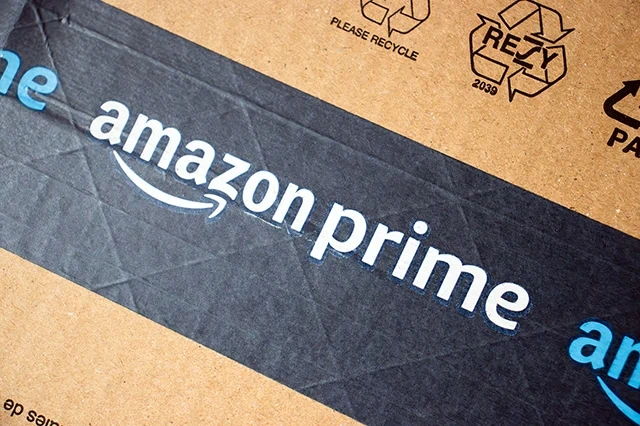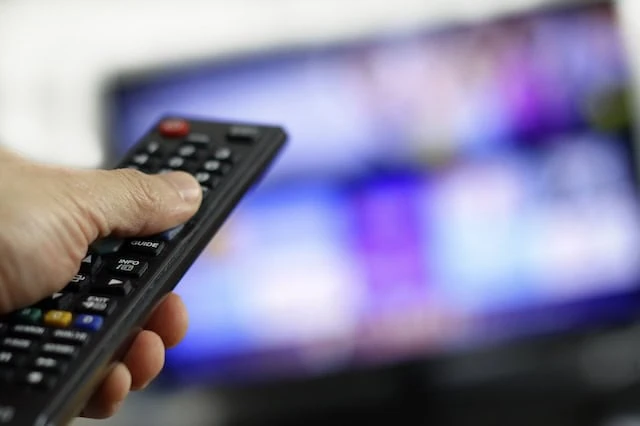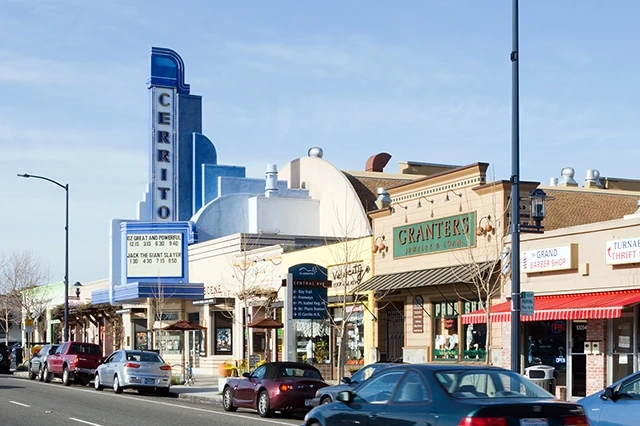We all deserve a little indulgence now and then. Whether it’s a decadent dessert, a thrilling concert, or a vacation to recharge, life’s pleasures make it worth living.
But with rising prices and declining quality, it’s getting harder to justify some of our favorite splurges. Maybe it’s time to rethink what brings us joy and find new ways to treat ourselves without breaking the bank.
So, what expenses just aren’t worth it? We look at a few products and services whose costs increasingly outweigh the enjoyment they provide.
Table of Contents
8 Expenses People Have Had Enough Of

Whether it’s cutting down on the frequency of a recreational activity or switching to a more affordable product or service, consumers are starting to make some changes.
Consider whether or not the following items still deserve a spot in your own budget.
1. Concert Tickets

Live music used to be a fun, affordable activity that would give you a full night’s worth of entertainment even if you only knew a few of the artist’s songs. But concert ticket prices have soared to the point where, while super-fans will still pay hefty prices to see their idols, many people have given up on regularly attending concerts.
Some of the blame belongs to the promoters, artists, and venues. But the more rage-inducing issues are the flabbergasting fees from ticket companies, as well as resellers who never had any intention of attending a show.
Ticketmaster and other ticket sellers are some of the biggest offenders of drip pricing. According to the Break Up Ticketmaster Coalition, led by the American Economic Liberties Project, Consumer Federation of America, and other groups, ticket ordering fees added an average of 32% per purchase.
Resellers have arguably been even worse for concertgoers. According to the Wall Street Journal, between 2019 and 2023, the average resale price for concert tickets on SeatGeek rose from $125 to $252. Typically, reselling websites don’t limit how much a seller can charge, so for big names like Taylor Swift or Beyonce, resellers can price tickets at thousands of dollars—or even break the five-digit mark.
2. Fast Food

Remember when fast food “value menus” actually used to feel value-priced?
That feels like an eternity ago.
I’ve never been much of a McDonald’s person, but agreed to stop there on a drive last month and I was shocked it cost me nearly $8 to get an egg and cheese biscuit and iced coffee.
Of course, McDonald’s isn’t the only fast food joint to raise prices. Many consumers aren’t starting to find they just can’t justify the high prices anymore. According to a 2023 survey by Drive Research, a national market research company, 84% of respondents believe fast food is more costly than it was five years ago, and 45% say it’s “significantly more expensive.”
When budgets are tight and prices rise, customers react accordingly. According to data from consulting firm Revenue Management Solutions, about a fourth of low-income consumers (making less than $50,000 a year) reported they were eating less fast food, Reuters reports. Around half said they now make fewer visits to fast-casual and sit-down, full-service restaurants.
Related: 50+ Best Money-Making Apps That Pay You Real Money
3. Amazon Prime

When Amazon Prime first came out, it felt like a steal. You received fast, free shipping at a time when that was extremely unusual—and you got ad-free shows and movies to boot. And you received all of that for an original annual fee of $79.
But now, Amazon Prime costs much more—$139 annually—while simultaneously offering less.
Members frequently complain about increased Prime shipping times, receiving counterfeit items, and poor customer service. In the meantime, free shipping—particularly once you eclipse a set dollar amount—has become much more commonplace at other retailers than when Amazon first introduced it. In fact, you can sometimes even buy an item directly from the manufacturer without having to pay shipping. (And hey, that way, you know it’s the real deal.)
The most recent knock on Amazon Prime is that its Amazon Prime Video service now includes ads. Want an ad-free experience? You’ll have to pony up an extra $2.99 per month.
If you aren’t ready to completely cut Amazon Prime, you can consider splitting your membership with another family member through Amazon Household. An Amazon Household can have up to two adults (ages 18 and up), up to four teens, and up to four children. Adults still use their own individual accounts, and they can’t see one another’s orders or content. (Note: Users in the same Household must live in the same country, but they don’t need to share the same address.)
Related: Stop Shrinkflation! 10 Products Affected + Tips to Save Money
4. Airbnb

I’ve stayed in a lot of Airbnbs, but in the past couple of years, I’ve noticed that hotels increasingly look like a better deal.
Which?, a U.K.-based consumer rights and product testing not-for-profit, conducted a 2023 study comparing one-bedroom stays in hotels versus one-bedroom Airbnbs across 50 popular travel destinations, such as New York, Paris, and Hong Kong. The results showed that hotel rooms were cheaper than Airbnbs in 38 of the 50 locations. Plus, Airbnb doesn’t have any loyalty programs, so you won’t earn reward points like you might with your go-to hotels.
To be fair, there are some situations where Airbnbs can be cheaper. Hosts sometimes give hefty discounts for longer stays, so if you’re a digital nomad looking to stay in one place for several months, you might be able to snag a great Airbnb deal. Plus, some people cut down on food costs by cooking in Airbnb kitchens, rather than dining out.
But Airbnb no longer offers the massive value proposition it once did.
Cost isn’t the only reason people have soured on Airbnb. Some hosts expect guests to do a substantial amount of cleaning, hosts face few repercussions for last-minute cancellations, and if something goes wrong, there isn’t always someone nearby to help. Plus, some people have moral qualms about Airbnb hosts snatching up valuable real estate in areas where housing is in high demand.
Related: 7 Best Wealth + Net Worth Tracker Apps [View All Your Assets]
5. Having Several Streaming Services

The vast majority of Americans pay for streaming services, and almost half pay for three subscriptions at once. But rising prices are quickly making them reconsider their glut of “+” programming.
According to a Forbes Home survey, 44% of subscribers faced a cost increase from at least one of their services over the past year. And a similar percentage (45%) have canceled subscriptions because of higher costs. The decision of which streaming services to put on the chopping block varies by family, but Forbes found that, if prices increased, consumers would be most likely to ditch Disney+, Hulu, and ESPN+.
If TV is your favorite form of entertainment, and you use all those services, keeping up multiple subscriptions still might make sense. But many users don’t use all those services. Forbes also found that nearly half of respondents (48%) said they maintained subscriptions they barely use. And streaming services are becoming too expensive to keep wasting money like that.
Related: Consumers Should Avoid These 10 Products at Walmart
6. Cable

As people start weighing the increased costs of so many streaming services, some Americans are considering making the jump back to cable.
But is it actually a deal?
CNET compared the monthly prices of streaming services and major cable companies in six sample U.S. cities, including the following:
— Atlanta, Georgia (AT&T/DirecTV)
— Grantville, Kansas (Cox)
— Houston, Texas (Xfinity)
— Kalamazoo, Michigan (Spectrum)
— San Francisco, California (Xfinity)
— Staten Island, New York (Fios)
The prices for basic TV and internet ranged from $125 to $159. The lowest cost for premium TV and internet was $192 and the highest was $270. Unfortunately, that doesn’t include taxes and fees, which vary depending on the location, service type, and equipment. Taxes and fees tend to add between $30 to $50 to the monthly cost. The overall results found that even once you back out the internet component of those prices, cable TV tends to be more expensive than streaming services, even if you’re subscribed to several, and even if you get live TV as part of your streaming package. That said, sports fans, who must subscribe to a number of services to replicate what they can get from cable, might save money by going back to cable.
Cord-cutting households (those that have ditched their cable TV for alternatives) rose from 30.8 million in 2020 to 47.6 million in 2023, according to Broadband Search. By 2027, the number of cord-cutting households is expected to climb to 60.3 million. That’s tens of millions of Americans who are saying that, for one reason or another, cable TV’s juice simply isn’t worth the squeeze anymore.
Related: 9 Monthly Dividend Stocks for Frequent, Regular Income
7. Professional Hair Dyeing

The cost of getting your hair dyed at a salon can vary substantially by location. The cost of living in my city is about 4% higher than the national average, so I consider it a middle-of-the-road cost-of-living location. Were I to get my hair dyed at the salon where I get haircuts, all-over color would cost between $110 to $150. Full-head foil/highlighting with toner would cost $210 to $230. That’s before the customary tip, which is commonly 20%. As it’s generally recommended to dye your hair every one to two months … well, you can see how these expenses can add up.
Low-income earners simply can’t justify those costs.
Rather than salons, some people are choosing to dye their own hair at home. Others are embracing their natural colors. A 2021 survey conducted by OnePoll, on behalf of Garnier, found that around 80% of women dyed their own hair for the first time during quarantine. Over two-thirds of women said they planned to continue to color their hair at home and about a third responded that they intended to exclusively dye their own hair. Anecdotally, I have more than one older family member who stopped dyeing their hair during the pandemic and never started again.
Indeed, social media has even spawned a term around this phenomenon: “recession brunette.” It refers to how more people are going back to their natural brunette hair color because the cost of maintaining dyed blonde hair has become too expensive.
Related: 9 Financial Mistakes That Can Quickly Drain Your Retirement Savings
8. Movie Theaters

With the exception of box-office smashes like Barbie and Oppenheimer, it feels like fewer and fewer movies merit the rising costs of going to the theater.
The national average price of a ticket is up 17% since the start of the pandemic, to nearly $11 nationwide. Add in a couple of medium buckets of popcorn, a couple of small soft drinks, and a box of candy, and you’re looking at close to $80 for a family of four before taxes. And those numbers are much worse in places like New York and California, where average ticket costs are 40% to 50% higher than the national mean.
People are returning to movie theaters—the U.S. box office gross has improved in each of the past three years since bottoming during COVID. But 2023’s $8.9 billion take was still 22% lower than 2019’s $11.4 billion—and remember, that’s with much higher ticket prices, which means the actual number of tickets sold has rebounded by even less.
Some of those people might never come back. According to a 2022 Morning Consult poll, about half of respondents believe it’s too expensive to watch movies in theaters, and more than half (55%) prefer watching movies at home. And why not? In addition to saving money, you likely have more comfortable seating, whatever food and drink you want, and you don’t have to worry about missing anything if you need to take a bathroom break.
Related: 6 Best Stock Recommendation Services [Stock Picking + Tips]

Stock recommendation services are popular shortcuts that help millions of investors make educated decisions without having to spend hours of time doing research. But just like, say, a driving shortcut, the quality of stock recommendations can vary widely—and who you’re willing to listen to largely boils down to track record and trust.
The natural question, then, is “Which services are worth a shot?” We explore some of the best (and best-known) stock recommendation services.
Related: 12 Best Long-Term Stocks to Buy and Hold Forever
As even novice investors probably know, funds—whether they’re mutual funds or exchange-traded funds (ETFs)—are the simplest and easiest ways to invest in the stock market. But the best long-term stocks also offer many investors a way to stay “invested” intellectually—by following companies they believe in. They also provide investors with the potential for outperformance.
So if your’e looking for a starting point for your own portfolio, look no further. Check out our list of the best long-term stocks for buy-and-hold investors.
Related: Best Target-Date Funds: Vanguard vs. Schwab vs. Fidelity

Looking to simplify your retirement investing? Target-date funds are a great way to pick one fund that aligns with when you plan to retire and then contribute to it for life. These are some of the best funds to own for retirement if you don’t want to make any investment decisions on a regular basis.
We provide an overview of how these funds work, who they’re best for, and then compare the offerings of three leading fund providers: Vanguard, Schwab, and Fidelity.
Related: 9 Best Monthly Dividend Stocks for Frequent, Regular Income

The vast majority of American dividend stocks pay regular, reliable payouts—and they do so at a more frequent clip (quarterly) than dividend stocks in most other countries (typically every six months or year).
Still, if you’ve ever thought to yourself, “it’d sure be nice to collect these dividends more often,” you don’t have to look far. While they’re not terribly common, American exchanges boast dozens of monthly dividend stocks.
Please Don’t Forget to Like, Follow and Comment

Did you find this article helpful? We’d love to hear your thoughts! Leave a comment with the box on the left-hand side of the screen and share your thoughts.
Also, do you want to stay up-to-date on our latest content?
1. Follow us by clicking the [+ Follow] button above,
2. Subscribe to The Weekend Tea, our weekly newsletter to read more about investing, spending, taxes, and more, and
3. Give the article a Thumbs Up on the top-left side of the screen.
4. And lastly, if you think this information would benefit your friends and family, don’t hesitate to share it with them!






